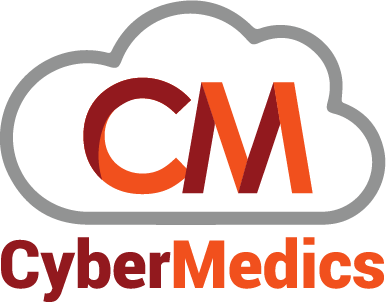
29 Requirements Gathering Questions for a Software Project
A software project is like a rollercoaster ride – full of twists, turns, and stomach-churning drops.
But don’t worry, we’re here to help you navigate the wild world of software development with an ironclad requirements-gathering phase – so you know exactly what to expect when you reach the end of the ride!
It’s time to ask the tough questions and get to the bottom of what your users really want. So buckle up, grab your notebook, and let’s dive into the top 15 requirements gathering questions for a software project.
Tip: Bookmark this article for safekeeping and share it with your team, so everyone has access to these questions!
Ready? Let’s go.
Why requirement-gathering questions are so important for a successful project
Look, we get it. Requirements gathering questions can feel like a chore. Like having to floss your teeth before a dentist appointment – it’s tedious, it takes time, and let’s be honest, it’s not exactly fun.
But here’s the thing: just like flossing can save you from a world of dental pain, requirements-gathering questions can save you from a world of software development pain.
They help to clarify project goals and objectives, so you don’t end up creating a software that looks like a hot mess.
They ensure that everyone involved in the project is on the same page, so you don’t have your developers running in one direction while your stakeholders run off in another.
They provide a roadmap for the project, which helps to keep everyone focused and working towards the same end goal. Without a roadmap, you’re basically driving blindfolded on a dark and stormy night.
They help to prevent scope creep. If you don’t define your requirements up front, you’ll end up with endless changes and additions that can drag the project out for months or even years.
They save time and money in the long run. By defining your requirements early on, you can avoid costly mistakes and delays later on in the project.
At CyberMedics, we ask many of the questions you’re going to see in the following sections to create innovative software solutions for our clients. Let’s get started!
Questions to understand the problem better
First and foremost, you need to understand the problem that your software is designed to solve. That means digging deep and asking the right questions.
What problem are you trying to solve with this software?
What’s the current system like?
What are the current pain points that you’re experiencing?
What happens when things go wrong in the current system?
What are the consequences of not having this software?
Are there any special considerations or requirements for the software?
Questions to identify user needs
To build successful software, you need to understand the different types of users and what they expect from your product.
Who will be using the software?
What are their goals when using the software?
What tasks will they need to accomplish with the software?
How does each user type interact with the system?
What are the user’s expectations for the software?
Questions to define functional requirements
A functional requirement is a specific feature or behavior that a software system must perform or exhibit to meet the needs of its users. These requirements typically outline what the software is expected to do in terms of its functions, tasks, and capabilities.
Here are some questions you’ll want to answer when defining the functional requirements for your software:
What are the key features that need to be included in the software?
What will be required for each feature to work effectively?
How will data be stored and managed within the system?
Are there any security, compliance, or accessibility requirements that must be met?
What features are nice-to-have, but not critical?
Questions for non-functional requirements
A non-functional requirement is a characteristic of software that doesn’t involve its specific functionality but is still essential for its success. They usually relate to software attributes like usability, reliability, performance, security, and scalability.
What are the performance requirements for the software?
Are there any regulatory or compliance requirements that need to be met?
What are the usability requirements for the software? (For example, a software designed for the elderly may need to have larger font sizes, high contrast colors, and minimal distractions on the interface.)
What are the accessibility requirements for the software? (If you’re designing software for blind users, you may need to have screen reader compatibility, while a software designed for users with physical disabilities may need to have voice-activated commands.)
Are there any scalability requirements for the software? (For instance, a software designed for an e-commerce website may need to have the ability to handle a large number of concurrent users during peak shopping seasons, while a software designed for a growing company may need to have the ability to handle increasing amounts of data as the company grows.)
What are the security requirements for the software?
Questions to highlight project constraints
Project constraints are any limitations or considerations that need to be taken into account when designing a software system. These may include budgetary constraints, timeline restrictions, resource availability, and technical limitations.
What is the time frame for the project?
Are there any budget or resource constraints?
What platforms will the software need to run on?
Are there any existing systems, databases, or technologies that need to be integrated with the software?
Are there any hardware requirements for the system?
Are there any technical limitations that need to be taken into account when designing the software?
What are the compatibility requirements for different operating systems or devices?
Do you have a preference for a specific development language or platform?
Best practices for a successful requirements-gathering session
Now that you know the types of questions to ask when gathering software requirements, here are some best practices for having a successful requirements-gathering session:
Tap into the emotional need behind each requirement. Doing so will help you get a better sense of why this feature is necessary and how it can benefit the user.
Get rid of any ambiguous language: Clarify any potential gaps in understanding with the client by asking specific questions. Sometimes they may use vague or unclear language like using the term “login form” to mean a more complex functionality like charging users a subscription fee. To avoid misunderstandings, it’s helpful to use scripts like
“Clients may use different terms or phrases to describe the same thing. For example, when they say ___, they might really mean ___. Or they might be referring to ___. To make sure we’re on the same page, could you clarify what you mean by ___?”
“To get a better understanding of how this feature will fit into your workflow, let’s imagine that it’s already been built. If we were to implement it exactly as you’ve described, what would be the outcome? How would it help you with the challenge you mentioned earlier?”
Identify corner cases: Consider the impact of the new feature on the rest of the system and identify any rare circumstances in which the feature may not work as expected. Build in time to discuss the requirement in detail and separate corner cases into additional features.
Write out user journeys: Write a user story that describes who will use the feature, what they want to accomplish, and why. Start with ‘As a [user], I want to [do something], so that [benefit].’ This helps ensure that the requirement is clear and focused on delivering value to the user. Use user stories as a bookmark of the conversation from steps 1-4.
Make sure everyone knows what a finished project looks like: Write a “How to Demo” or “HTD” for each User Story. This will serve as a written agreement that includes the definition of done. HTDs outline steps that will demonstrate to both the developer and the client that the requirement has been met to the client’s satisfaction. This removes any remaining ambiguity, illustrates that a requirement works, and outlines how it works.
Need help asking the right questions for your software project?
And that, my friends, is how you gather requirements like a pro! By following these best practices, you can ensure that your software project is set up for success from the very beginning.
No more confusion, no more misunderstandings, just a clear path forward toward the perfect digital solution for your business. So what are you waiting for? Get out there and start asking those questions! Your software project will thank you for it.
And if you need some help ironing out the details of your new software project, get in touch with CyberMedics. We’re experts in requirements gathering, project management, and software development, and we’d love to put our skills to work for you.
Want to chat about your requirements? You can bet we’ll ask the right questions 😉
